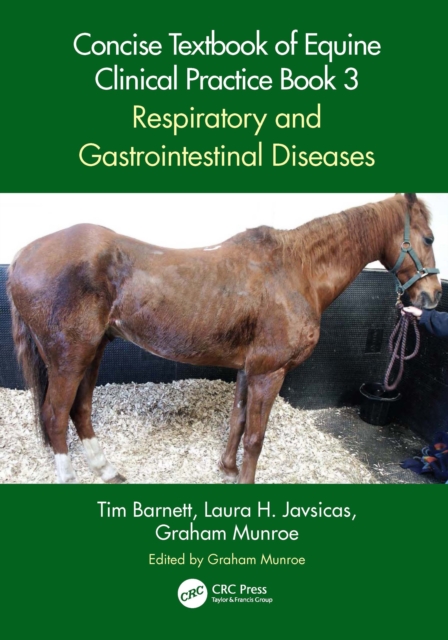
Concise Textbook of Equine Clinical Practice Book 3 : Respiratory and Gastrointestinal Diseases PDF
by Tim Barnett, Laura H. Javsicas, Graham Munroe
Description
This concise, practical text covers the essential information veterinary students and nurses, new graduates, and practitioners need to succeed in equine medicine, focussing on respiratory and gastrointestinal diseases. Written for an international readership, the book conveys the core information in an easily digestible, precise form with extensive use of bullet points, lists, diagrams, protocols, and extensive illustrations (over 300 full-colour, high-quality photographs).
Part of a five-book series that extracts and updates key information from Munroe's Equine Surgery, Reproduction and Medicine, Second Edition, the book distils best practice in a logical straightforward clinically based approach. It details relevant clinical anatomy, physical clinical examination techniques and findings, normal parameters, aetiology/pathophysiology, differential diagnoses, diagnostic techniques, management and treatment, and prognosis. The emphasis is on information tailored to general equine clinicians with just enough on advanced techniques to make the practitioner aware of what is available elsewhere.
- The respiratory system is split into sections on surgical and medical conditions of the upper and lower respiratory tracts.
- The gastrointestinal system is divided into the upper tract, including the oral cavity and dentistry, and the lower tract and peritoneal cavity.
Ideal for veterinary students and nurses on clinical placements with horses as well as practitioners needing a quick reference 'on the ground'.
Information
-
Download - Immediately Available
- Format:PDF
- Pages:296 pages
- Publisher:CRC Press
- Publication Date:08/02/2024
- Category:
- ISBN:9781000923940
Other Formats
- EPUB from £48.59
Information
-
Download - Immediately Available
- Format:PDF
- Pages:296 pages
- Publisher:CRC Press
- Publication Date:08/02/2024
- Category:
- ISBN:9781000923940






